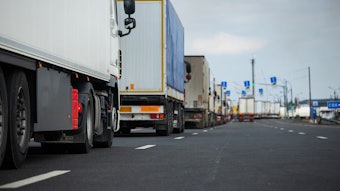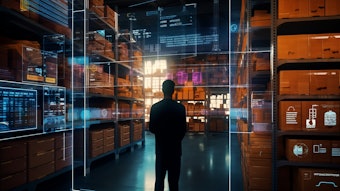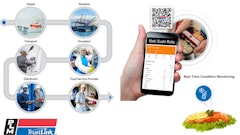
The 2024 State of Logistics Report produced annually for the Council of Supply Chain Management Professionals (CSCMP) by Kearney and presented by Penske Logistics shows that U.S. supply chains pressured by global economic volatility -- including inflation, climate change and geopolitical conflicts -- are enhancing their capabilities by investing in supply chain technologies to accelerate resilience, agility and flexibility to navigate current and future disruption.
“After reading the report cover-to-cover, I encourage you to ask, ‘what’s different’, and do I understand the course of action to ensure maximum logistics success on the road ahead? Whether you are the senior leader or an entry-level analyst, you have decisions to make that will make a difference in your supply chain’s performance. The CSCMP State of Logistics Report presents powerful and timely insights that bring to life critical data and insights that will help readers develop solutions to their logistics challenges,” says CSCMP president and CEO Mark Baxa.
“Continued volatility drives our clients to rethink and rewire the logistics capabilities that drive their supply chains. Both shippers and carriers find that the people, processes and tools that move goods and information in global supply chains are often inadequate for their needs and require accelerated investment. The State of Logistics Report shows what is happening, where and why,” adds Josh Brogan, Kearney partner and lead author for the State of Logistics Report.
“Our customers, as well as the industry, continue to face significant challenges in maintaining both a consistent and cost-effective supply chain. Investing in technologies to help improve agility and resilience will better position organizations and the industry as a whole to seamlessly navigate future disruptions. The State of Logistics Report provides an excellent explanation of what we are all currently experiencing,” adds Andy Moses, SVP of sales and solutions for Penske Logistics.
Key takeaways:
- The report found that uncertainty is now a near constant in the global economy, and that the smartest way to respond to steady times is to rekindle strategic projects and gather resources to improve resilience. The global economy is expected to experience sluggish 2.5% growth across 2024, which would represent the slowest half-decade of output in 30 years. Demand has not yet fully recovered, with myriad forces at play, and new growth engines will need traction before the tide turns.
- U.S. business logistics costs is $2.3 trillion, which translates to 8.7% of the national GDP.
- There are multiple reasons why demand has not yet fully recovered, chief among them are simultaneous geopolitical conflicts around the world, climate change (which has affected shipping lanes), high inflation, high interest rates, and sluggish demand.
- As a result of the economic headwinds and geopolitical instability, the continued fragmentation of global trade is complicating supply chain transactions. There were over 1,000 U.S. freight brokers that shuttered their doors since the 2023 report was released.
- Some of the largest manufacturers and retailers are seeking to monetize their own logistics capabilities while viewing their supply chain successes as a service to market and profit from.
- Carriers have been plagued by high operating costs, while lackluster demand, and the capacity glut, have made it hard for them to charge the kinds of rates that would allow them to sustain rates and protect their margins.
- Third-party logistics (3PL) providers continue to work through significant challenges right now, which includes high operating and insurance costs, low freight rates, and excess capacity.
- Investments in emerging technologies such as artificial intelligence, end-to-end visibility, and advanced automation are expected to drive competitive advantage and greater resilience to future disruption in the logistics sector.
- Major global corporations have adopted rigorous environmental goals. Further government funding programs have been launched to encourage decarbonization initiatives, which indicate progress in both the public and private sector, toward higher levels of sustainability.



























